一元操作符 && 获取标签对应代码的地址
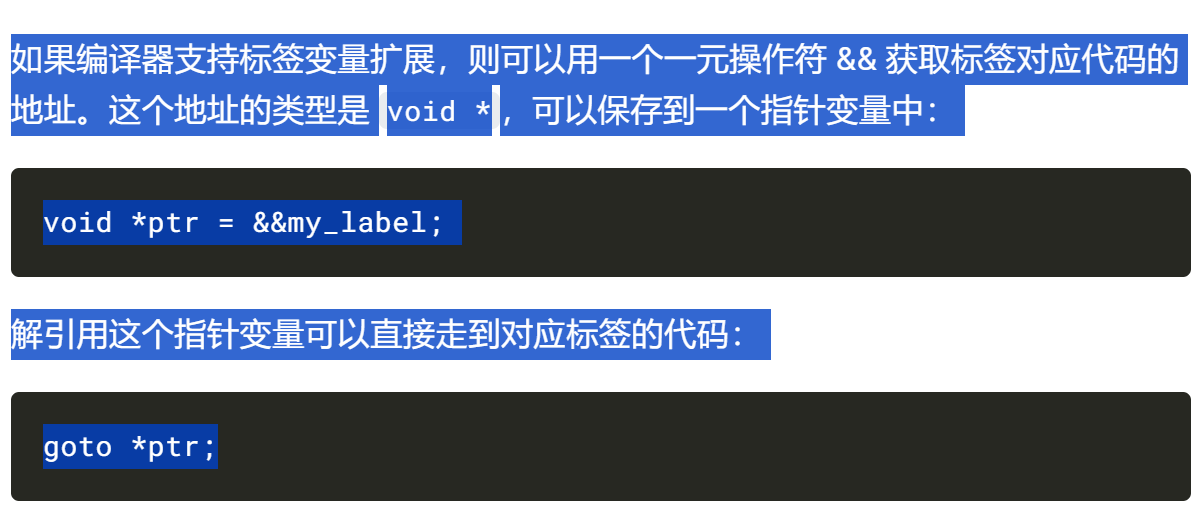
为什么使用 TARGET,DISPATCH 之类的宏定义?
求值循环中到处都是 TARGET() 、DISPATCH() 之类的宏,根据一个特定优化选项的开启情况,这些宏会扩展为不同代码。这个优化选项即“计算跳转”(也叫“线程代码”(threaded code)),开启后,可以利用 CPU 的分支预测机制,提高字节码的执行速度。
每个文件都要搞一个是吧??
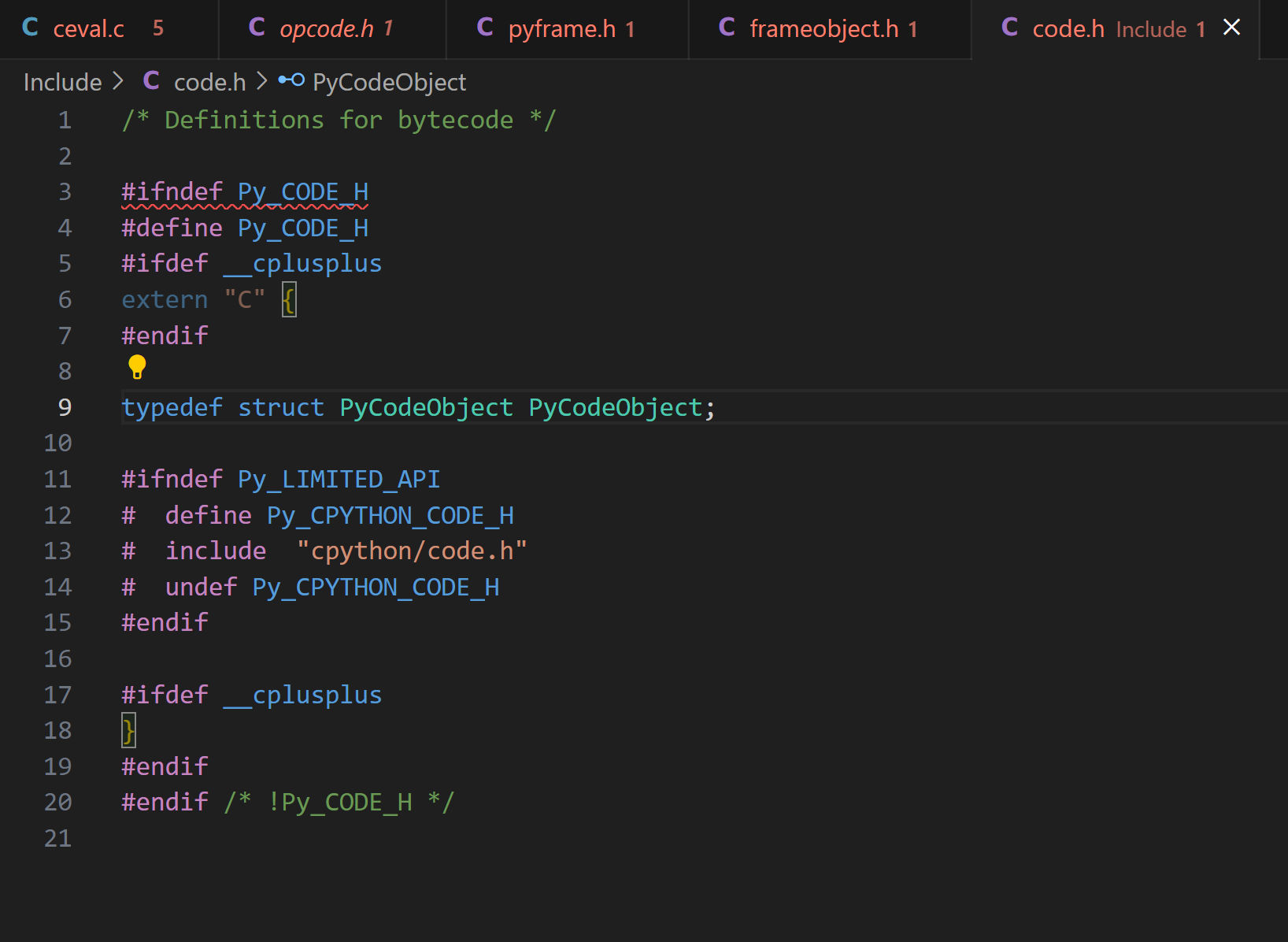
结构体里面定义结构体的指针
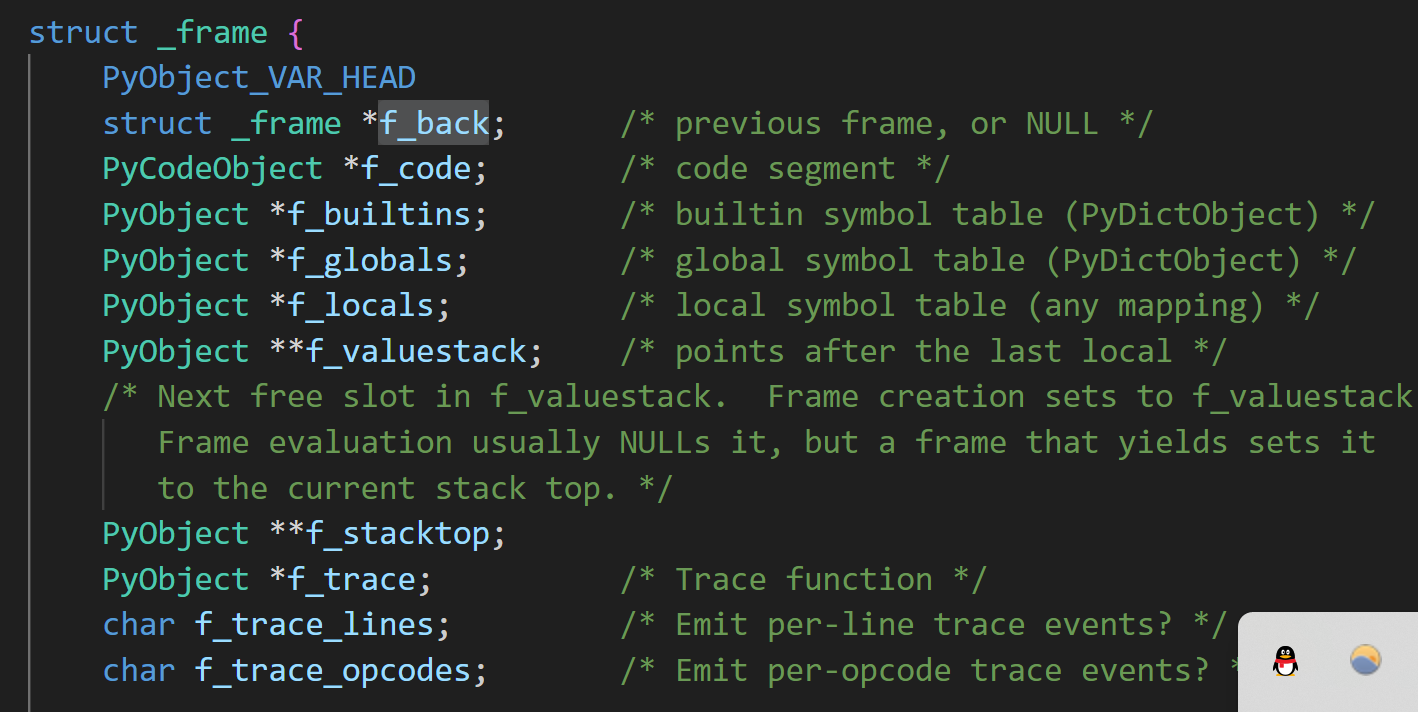
这空格是个什么鬼?
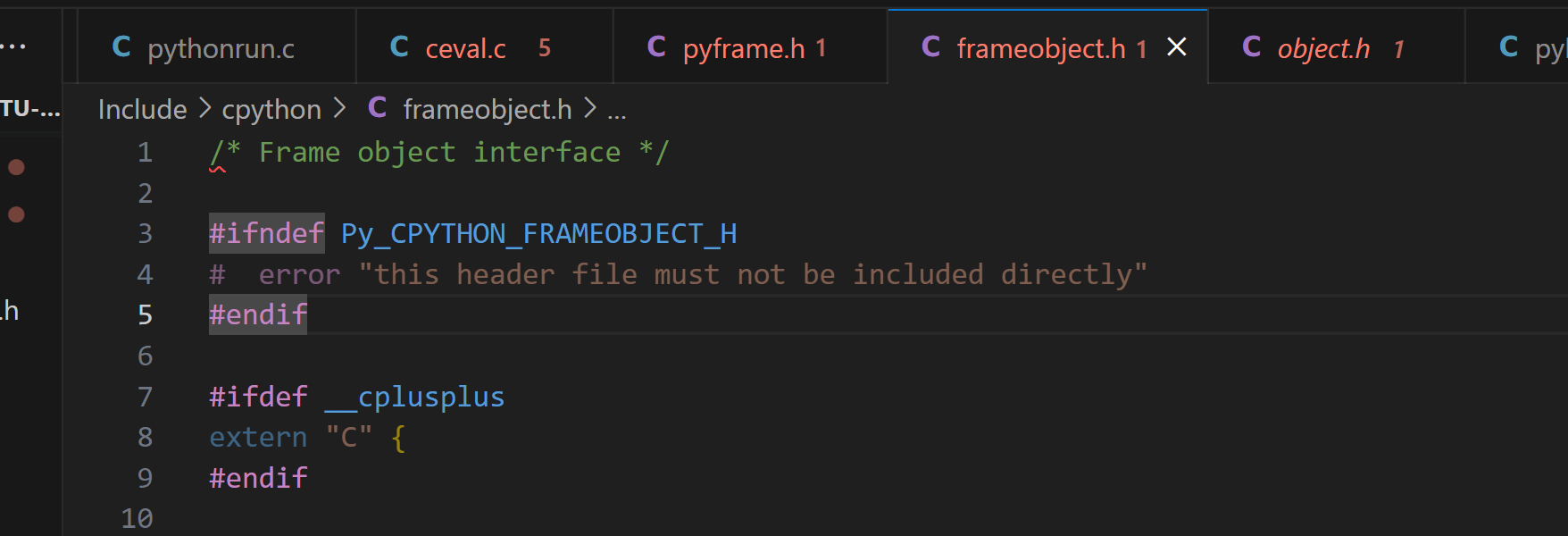
条件编译(Conditional Compilation)用法,这个空格没什么用。
在同一级目录下的.h 文件,可以直接互相使用对方定义的变量嘛?
在同一级目录下的 .h 文件可以相互包含并使用对方定义的变量,但需要注意一些细节:
头文件保护(Header Guards): 为了避免重复包含同一个头文件,通常在头文件的开头会使用头文件保护宏(header guard macro)。这样可以防止多次包含同一个头文件,避免编译错误。
- 示例头文件保护的代码:
cCopy code
// 在 headerfile.h 头文件中#ifndef HEADERFILE_H#define HEADERFILE_H// 头文件内容#endif // HEADERFILE_H
- 当一个 .h 文件中定义了头文件保护宏,其他 .h 文件可以多次包含该头文件,但只有第一次包含时才会生效。
- 正确的包含顺序: 如果两个 .h 文件相互包含,要确保包含的顺序是正确的,以避免循环包含(circular inclusion)问题。
- 例如,如果
headerfile1.h包含了headerfile2.h,则在headerfile2.h中不应再包含headerfile1.h,否则会导致循环包含。
正确的包含顺序示例:
cCopy code
// headerfile1.h#ifndef HEADERFILE1_H#define HEADERFILE1_H#include "headerfile2.h"// 头文件内容#endif // HEADERFILE1_H
cCopy code
// headerfile2.h#ifndef HEADERFILE2_H#define HEADERFILE2_H// 头文件内容#endif // HEADERFILE2_H
- 全局变量的定义: 如果两个头文件中包含了全局变量的声明,这些变量的定义应该放在一个 .c 文件中,以确保只有一个实际的全局变量定义。
- 例如,如果在
headerfile1.h和headerfile2.h中都声明了一个全局变量int myVar;,则应该在一个 .c 文件中定义这个变量,然后在两个头文件中声明它。 - 示例定义全局变量的代码:
cCopy code
// global.cint myVar; // 实际的全局变量定义// 在 headerfile1.h 和 headerfile2.h 中声明 myVarextern int myVar;
总之,同一级目录下的 .h 文件可以相互包含和使用对方定义的变量,但需要遵循头文件保护规范、正确的包含顺序和全局变量的定义方式。
头文件保护
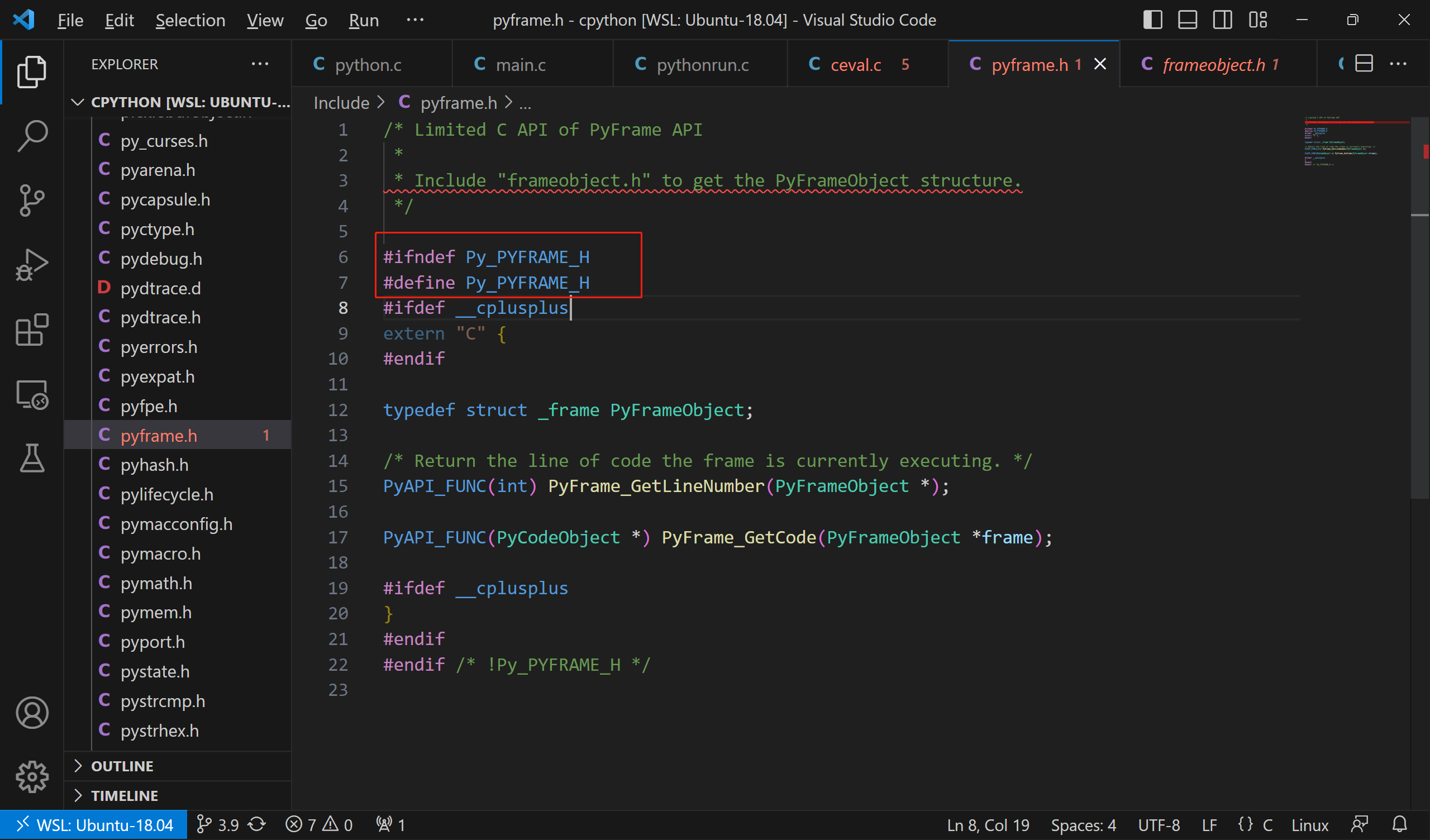
这就是个头文件保护。
C++ 里面调用 C
#ifdef __cplusplus
extern "C" {
#endif
这种用法通常用于解决 C++ 代码与 C 代码之间的兼容性
。因为 C++ 具有更丰富的特性和语法,有时需要与 C 代码进行交互,但 C 语言不支持一些 C++ 特性,因此需要通过 extern "C" 来告诉编译器使用 C 调用约定,以确保 C++ 代码与 C 代码可以正确地链接和交互。
Python 的求值循环换位置了
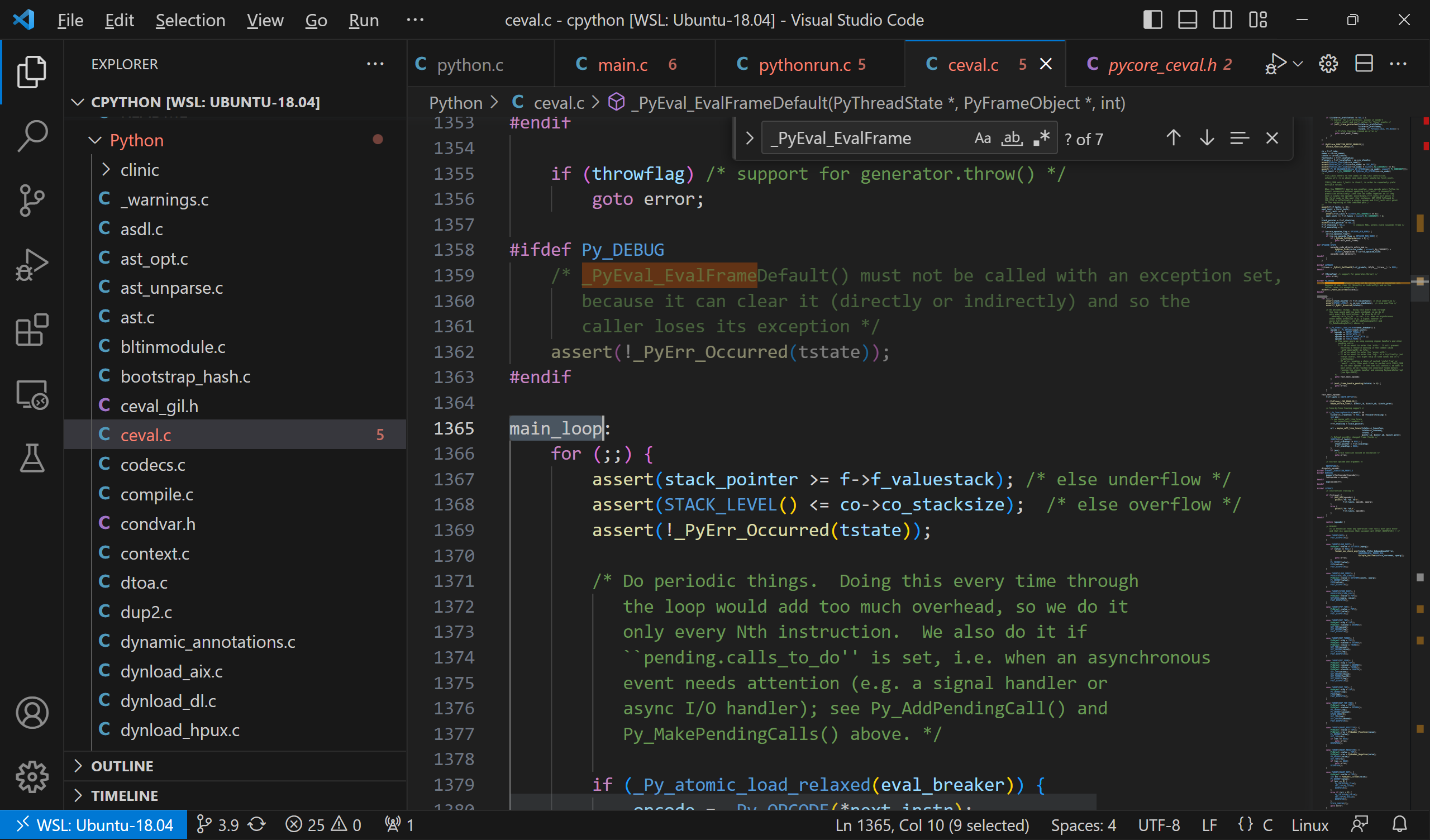
struct 里面嵌套 struct 用的很多啊
直接声明 + 定义了
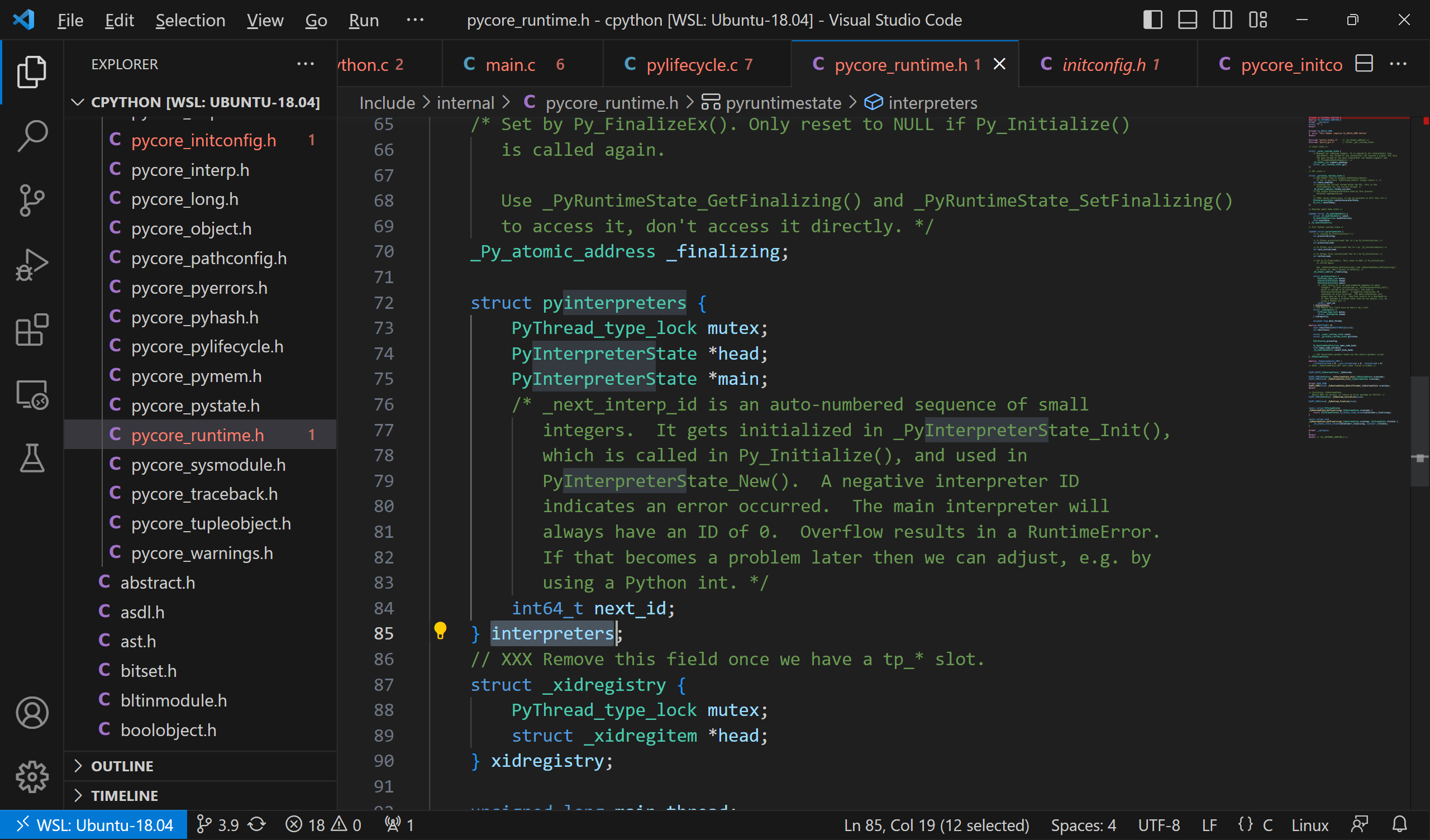
C 语言里面实现回调 callback
在 C 语言中,回调是一种常见的编程模式,它允许将一个函数作为参数传递给另一个函数,从而在某个特定事件发生时执行传递的函数。回调通常用于实现事件处理、异步操作和插件系统等情况。以下是在 C 语言中实现回调的一般步骤:
- 定义回调函数的类型: 首先,需要定义回调函数的类型。这是一种函数原型,指定了回调函数应该接受的参数和返回值类型。
cCopy code
typedef void (*CallbackFunction)(int arg);
- 编写回调函数: 实现一个回调函数,它与之前定义的回调函数类型匹配。
cCopy code
void myCallback(int arg) {
printf("Callback function called with argument: %d\n", arg);
}
- 接受回调函数作为参数: 编写一个函数,该函数接受回调函数作为参数,并在适当的时候调用该函数。
cCopy code
void performOperation(int value, CallbackFunction callback) {
printf("Performing operation with value: %d\n", value);
callback(value); // 调用传递的回调函数
}
- 使用回调函数: 在需要的地方调用带有回调函数参数的函数。
cCopy code
int main() {
int data = 42;
performOperation(data, myCallback);
return 0;
}
在上述示例中,performOperation 函数接受一个整数值和一个回调函数作为参数。当调用 performOperation 时,它执行某个操作并在合适的时候调用传递的回调函数。
typedef c function pointer
typedef void (*CallbackFunction)(int arg);这是啥啊?
typedef void (*CallbackFunction)(int arg); 是在 C 语言中定义了一个函数指针类型 CallbackFunction,它指向一个接受 int 参数并返回 void 的函数。
让我来解释一下这段代码的各个部分:
typedef: 这是 C 语言中用来定义类型别名的关键字。它允许你为已有的数据类型创建一个新的名字,使代码更具可读性和可维护性。void: 这是一个函数的返回类型,表示函数不返回任何值。(*CallbackFunction): 这是一个函数指针的声明。CallbackFunction是我们定义的新类型的名称,*表示这是一个指针,然后是函数指针名。(int arg): 这是函数指针所指向的函数的参数列表。在这个例子中,这个函数接受一个int类型的参数。
综合起来,typedef void (*CallbackFunction)(int arg); 定义了一个新的类型 CallbackFunction,它是一个函数指针,指向一个具有 int 参数并返回 void 的函数。在后续的代码中,你可以使用 CallbackFunction 这个类型来声明变量,然后将函数赋值给这个变量,从而实现函数的回调。
We can use
typedefto simplify the usage of function pointers. Imagine we have some functions, all having the same signature, that use their argument to print out something in different ways:``` #include
void print_to_n(int n) { for (int i = 1; i <= n; ++i) printf(“%d\n”, i); }
void print_n(int n) { printf(“%d\n, n); } ``
> Now we can use a `typedef` to create a named function pointer type called printer:
> ```
typedef void (*printer_t)(int);
This creates a type, named
printer_tfor a pointer to a function that takes a singleintargument and returns nothing, which matches the signature of the functions we have above. To use it we create a variable of the created type and assign it a pointer to one of the functions in question:
printer_t p = &print_to_n; void (*p)(int) = &print_to_n; // This would be required without the type
> Then to call the function pointed to by the function pointer variable:
> ```
p(5); // Prints 1 2 3 4 5 on separate lines
(*p)(5); // So does this
Thus the
typedefallows a simpler syntax when dealing with function pointers. This becomes more apparent when function pointers are used in more complex situations, such as arguments to functions. If you are using a function that takes a function pointer as a parameter without a function pointer type defined the function definition would be,
void foo (void (*printer)(int), int y){ //code printer(y); //code }
> However, with the `typedef` it is:
> ```
void foo (printer_t printer, int y){
//code
printer(y);
//code
}
https://stackoverflow.com/questions/9410/how-do-you-pass-a-function-as-a-parameter-in-c
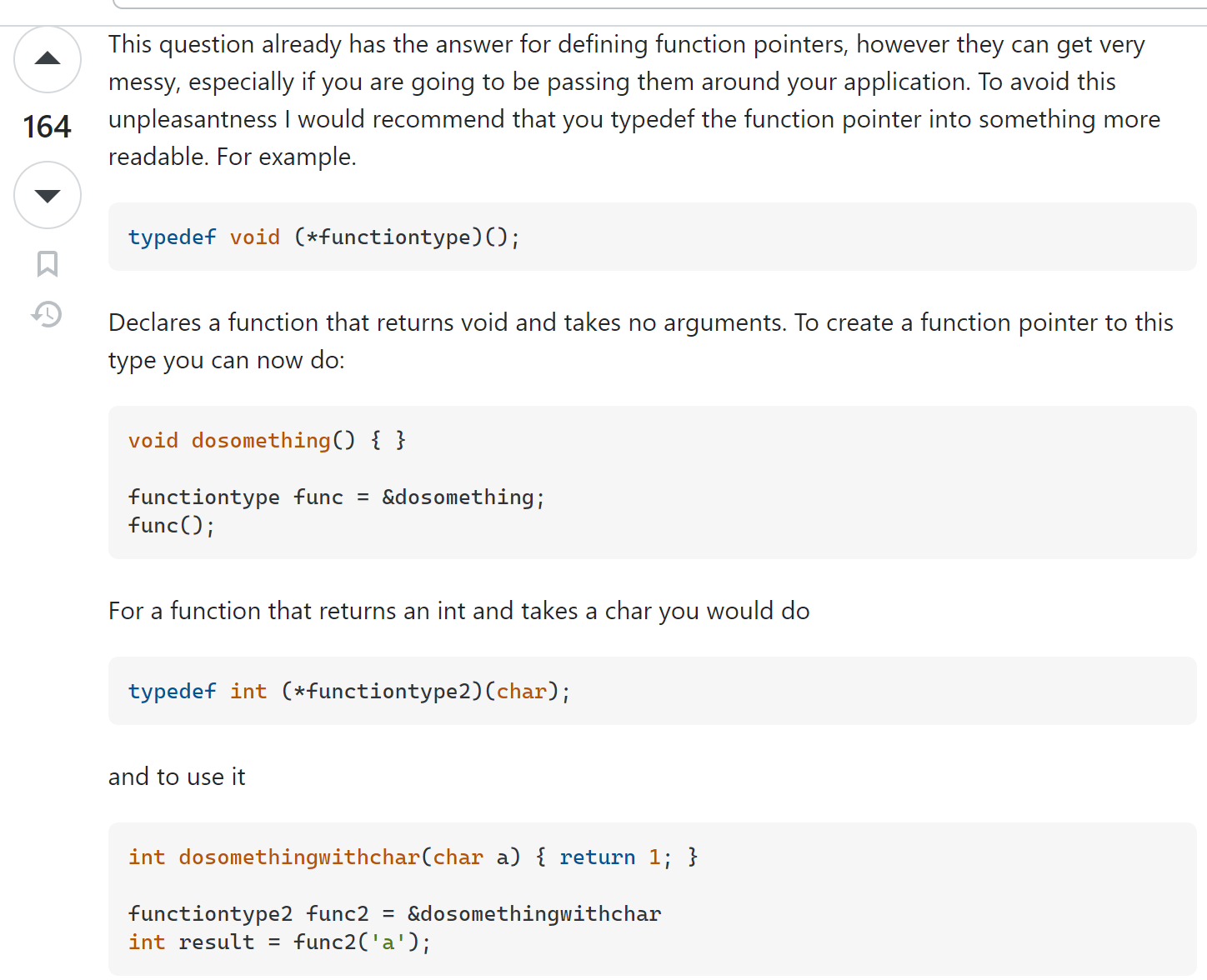
function pointer
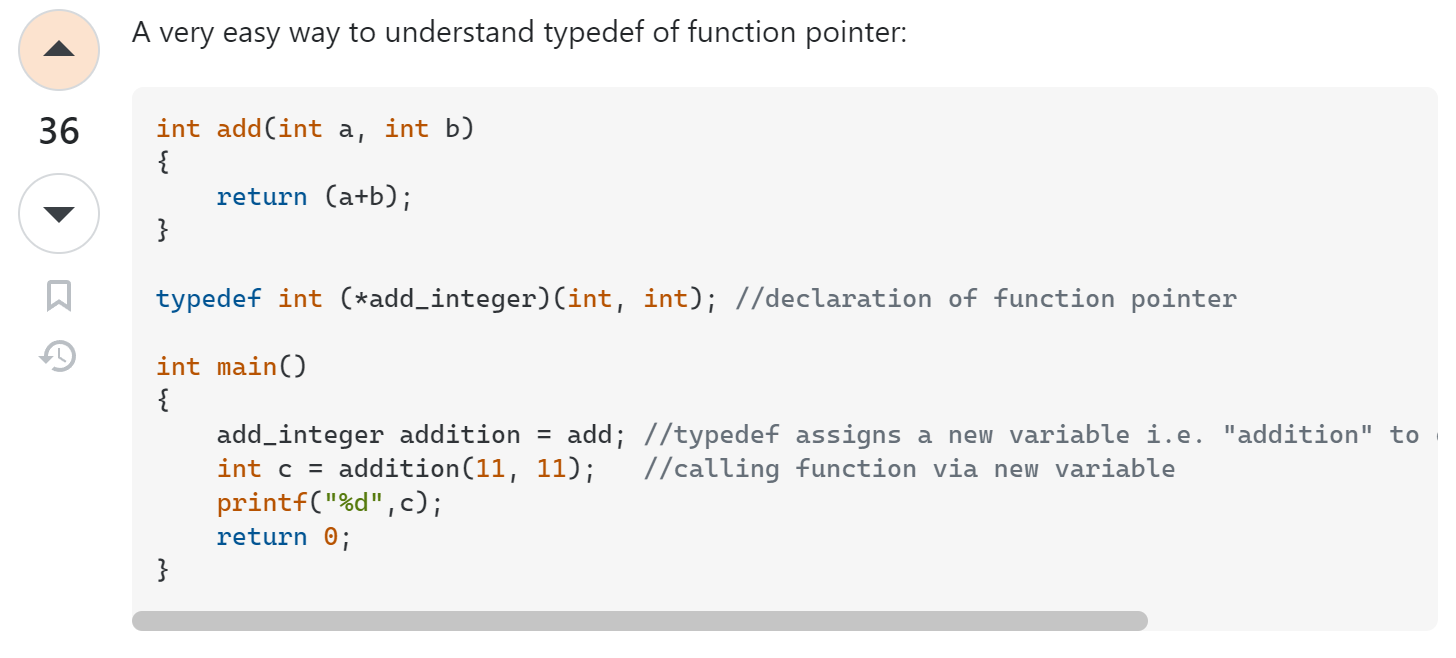
C 语言实现继承(其实是组合)和多态
而下面的是大家熟悉的 float 类型的结构体定义:
typedef struct {
PyObject_HEAD // 一个宏,扩展为 PyObject ob_base;
double ob_fval;
} PyFloatObject;
在 C 语言中,指向任意结构体的指针可以转换为指向该结构体第一个成员的指针,反过来也一样。因此,由于 Python 对象的第一个成员都是 PyObject,CPython 可以将所有 Python 对象都当作 PyObject 处理。你可以把它当作一种 C 语言中实现子类的方式。这种做法的好处是实现了多态性,比方说,通过传递 PyObject,可以将任意 Python 对象作为参数传给函数。
https://www.codementor.io/@michaelsafyan/object-oriented-programming-in-c-du1081gw2
为啥这么喜欢使用 typedef?
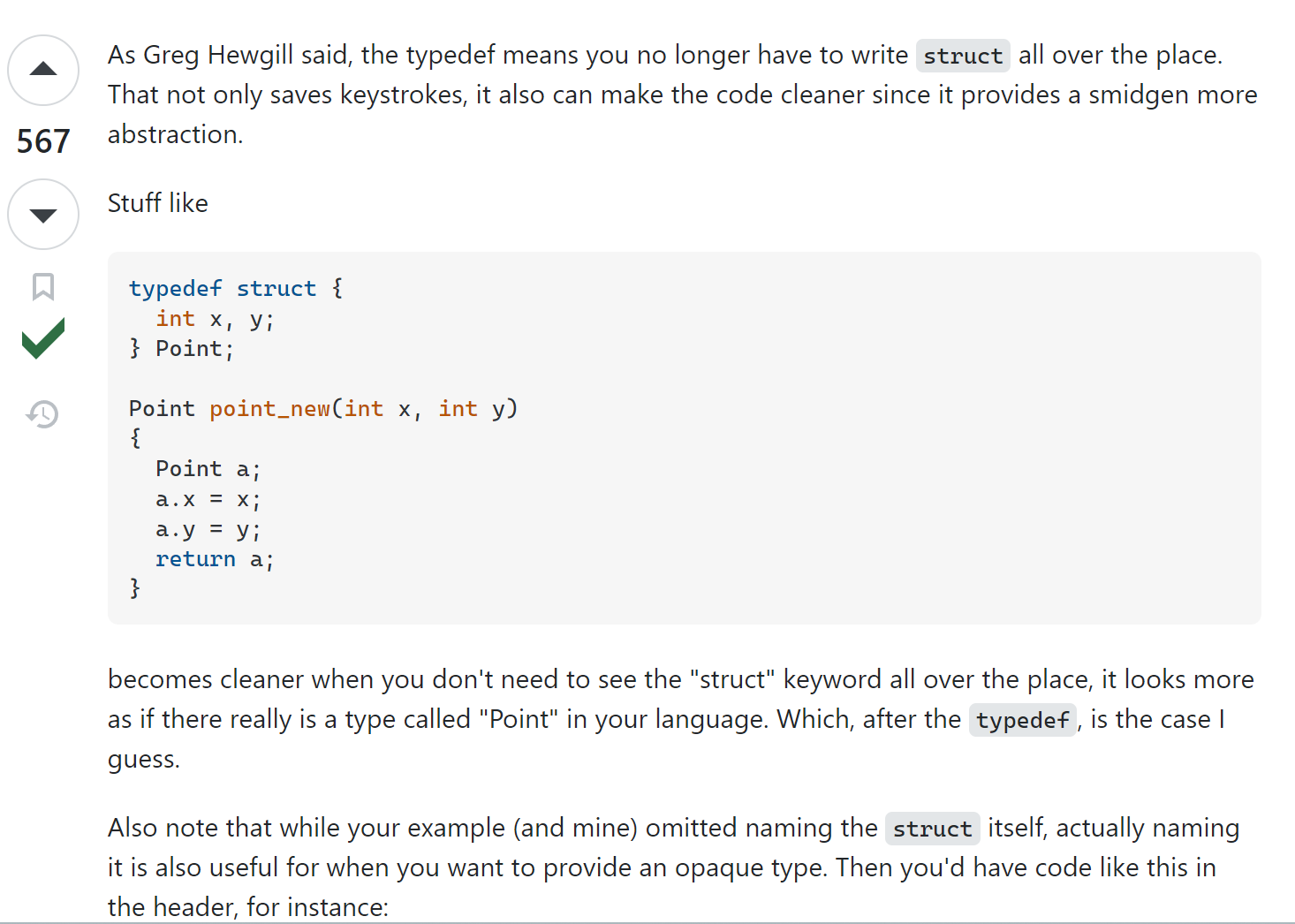
https://stackoverflow.com/questions/252780/why-should-we-typedef-a-struct-so-often-in-c
指向指针数组的指针,数组里每个指针指向一个字符数组

https://stackoverflow.com/questions/7026350/whats-char-const-argv I’m studying linux C++ programing when I see
int execve(const char *path, char *const argv[], char *const envp[]);
> I don't understand what is `char *const argv[]` . I know `char *const foo` is a const pointer to char. And `const char *foo` is a pointer to a const char. But what's `char *const argv[]`?
> Is it an array of const pointers to char or an array of pointers to const char?
> And I have a `vector<string>` now, how to convert it to `char *const argv[]`?
> 答案:
> Read types right to left:
const always binds to the left (unless it is on the very left)
> ```cpp
char *const argv[]
^^ Array of
^^^^^ const
^ pointer to
^^^^ char
An array of
"const pointer"to char So the pointers in the array can not be modified. But what they point at can be modified. Note: As pointed out by Steve below. Because this is being used as a parameter. It actually decays to a “A pointer to"const pointer"to char” or “char* const *”.
const always binds to the left (unless it is on the very left) 这句话是在讨论 C/C++ 中
const关键字的语法规则。它的意思是,const关键字通常会紧密地与其左边的内容绑定在一起,除非它位于表达式的最左侧。 让我们通过几个例子来理解这句话:
const在左边的情况:
const int x:在这个例子中,const关键字绑定在int类型的左边,表示x是一个常量整数。const不在最左边的情况:
int const x:虽然const关键字不在最左边,但它仍然紧密地绑定在int类型的左边,表示x是一个常量整数。- 复杂情况:
int * const * ptr:在这个例子中,const关键字位于*的左边,表示ptr是一个指向常量指针的指针。const关键字紧密绑定在*的左边。- 特殊情况 - 最左边的
const:
const int * x:在这个例子中,const关键字在类型名int的最左边,表示x是一个指向整数的常量指针。这是唯一一个const在最左边的情况。 总之,这句话强调了const关键字通常会与它左边的内容(类型名、指针符号等)紧密地结合在一起,除非它本身位于表达式的最左边。这个原则有助于理解const在不同情况下的作用和含义。
char * const *bytes_argv;
const 在 char * 后面,表示 char * 指向的字符串是不变的。
对于 char * const *bytes_argv,这个声明表示它是一个指向指针数组的指针。让我们来逐步解释它的结构:
char *:这表示一个指向字符(char)的指针。每个指针都可以指向一个字符数组,这个字符数组可以被视为一个字符串。char * const_:这是一个指向 __char _ 的指针,也就是指向指针的指针。每个指针指向一个字符指针,而这些字符指针可以指向字符数组。char * const *bytes_argv:这是一个具体的变量名,代表一个指向字符指针数组的指针。在这里,bytes_argv可以被用来指向一个指针数组,而每个指针数组元素指向一个字符数组,表示命令行参数以字节序列的形式。
使用
使用
char * const *bytes_argv类型的变量通常涉及到操作指针数组和字符数组。这种类型的变量在处理命令行参数等字符串数组时非常常见。下面是一个简单的示例来说明如何使用这种类型的变量: 假设您有一个char * const *bytes_argv类型的变量argv,它指向一个指针数组,每个指针指向一个字符数组(字符串):
cCopy code char *const args[] = { “program_name”, // argv[0]”arg1”, // argv[1]”arg2”, // argv[2]”arg3”, // argv[3]NULL // The array ends with a NULL pointer };
char *const *bytes_argv = args;
> 现在,您可以使用 `bytes_argv` 来访问每个命令行参数的字符串:
> ```c
cCopy code
printf("Program name: %s\n", bytes_argv[0]); // Prints "program_name"printf("First argument: %s\n", bytes_argv[1]); // Prints "arg1"printf("Second argument: %s\n", bytes_argv[2]); // Prints "arg2"printf("Third argument: %s\n", bytes_argv[3]); // Prints "arg3"
请注意,每个字符数组(字符串)在内存中是连续的字符序列,以 null 终止。通过使用指针数组,您可以遍历每个命令行参数,并对其进行处理。
C 中结构体初始化的方式
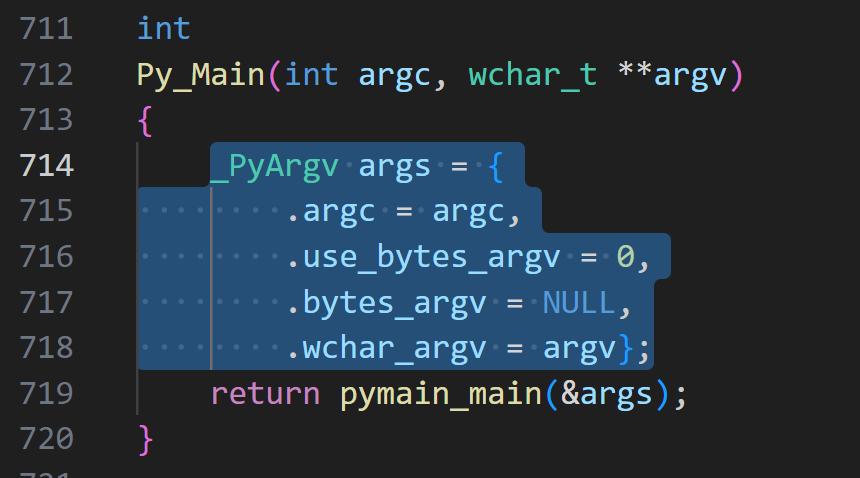
这里面的.是什么意思??
在 C 语言中,使用 {} 初始化结构体的时候,可以使用点号 . 来指定每个成员的初始值。点号 . 后面跟着成员的名称,然后是等号 = 和初始值。这种语法称为“指定初始化”(Designated Initializers),它允许您按照成员的顺序以外的方式初始化结构体的成员。
除了使用指定初始化(Designated Initializers)语法来初始化结构体,还有其他几种初始化方式,具体取决于 C 语言的版本和您的需求。以下是一些常见的初始化方式:
- 按顺序初始化: 在 C 语言早期版本中,可以按照结构体成员的顺序来初始化。例如:
cCopy code
_PyArgv args = {argc, 0, NULL, argv};
- 匿名结构体初始化: 在 C11 标准中,可以使用匿名结构体初始化。这样可以在不定义结构体类型的情况下直接初始化。
cCopy code
_PyArgv args = {.argc = argc, .use_bytes_argv = 0, .bytes_argv = NULL, .wchar_argv = argv};
- 通过构造函数: 如果您使用 C++ 编程,还可以通过结构体的构造函数来进行初始化。
文档信息
- 本文作者:Zzhiter
- 本文链接:http://zzhiter.top/2023/09/17/Initial-Exploration-of-Cpython/
- 版权声明:自由转载-非商用-非衍生-保持署名(创意共享3.0许可证)